Output devices of Computer
The output devices are the hardware parts which can create the whole computer system with the combination of all hardware parts. The user can get the desired output via output devices. The output device converts the data or information into the human-readable form.
The output devices can provide the output in user's readable form due to the output unit. The different types of output devices display the output in various ways such as text, images, hard copies, audio, and videos, etc. These devices are used to communicate between the user and the computer.
The most common output device is a monitor. The audio speakers are also the type of output device. The output device is mainly used to send the data from the computer to the user or any device. A display device is also a form of the output device. This device represents the output visually on the computer screen.
- Monitor
- CRT monitor (Cathode ray tube)
- Liquid crystal display (LCD) monitor
- Light-emitting diode (LED) monitor
- Plasma monitor
- Printer
- Impact printers
- Character printers
- Line printers
- Drum printer
- Chain printer
- Non-impact printers
- Laser printer
- Inkjet printer
- Impact printers
- Projector
- audio speaker
- headphones
- GPS
- Sound Card
- Video Card
- Braille Reader
- Plotter
A. Monitor
The monitor is an electronic visual computer display which includes a screen, circuitry. The monitors used cathode ray tubes in history, which create large, bulky, and inefficient. In these days the flat screen LCD monitors are used in the devices such as laptops, desktop computer, etc. These monitors are light weighted and more energy efficient. The monitor is also known as a screen or visual display unit. There are mainly four types of monitor related to computer systems which are given below:
1. CRT Monitor (Cathode ray tube)
The CRT monitor contains millions of tiny red, green, and blue phosphor dot. These phosphor dots glow when it struck by the electron beam and travels across the screen to create a visible image.
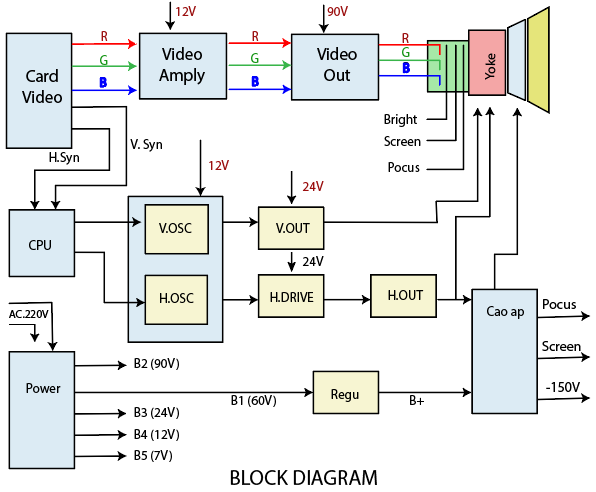
Fig: The CRT Monitor.
The anode and cathode are used in electronics as the synonyms of positive and negative terminals. The cathode is the heated filament in the Cathode ray tube (CRT).
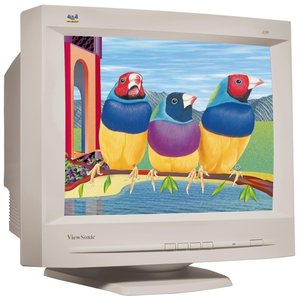
Fig: The image of the CRT monitor screen.
The ray is the stream of electrons produced by the electron guns. The electrons are harmful, and the anode is positive, so, both of these attract each other. We have three ways to filter the electron beam to obtain the correct image on the monitor screen.
2. Liquid Crystal Display (LCD)
The liquid crystal display is the flat panel display or the electronically modulated optical device which can use the light-modulating properties of liquid crystals. The LCD monitors are used in the full range of applications such as LCD televisions, computer monitors, instrument panels, aircraft cockpit displays, etc.
The small LCD screens are common in portable devices such as digital cameras, watches, calculators, etc. These types of monitor screens do not use phosphors. The LCD screen is more energy-efficient and disposed of more safely than the CRT monitor screen.
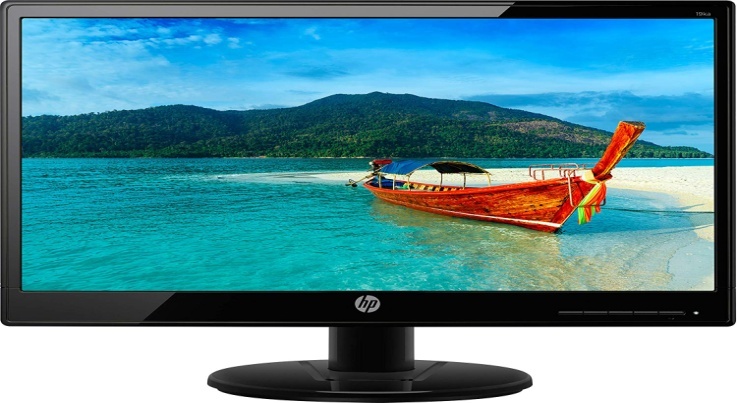
Fig: The image of the LCD monitor screen.
The modern LCD monitor screen uses active matrix technology and contains thin-film transistors with capacitors so that the pixels don’t make the screen blur. The screen of the LCD monitor is more efficient than passive matrix displays when images move fast on the screen.
3. Light Emitted Diode Monitor (LED)
The LED monitor is the flat screen, flat panel monitor, or television. This type of monitor screen has very short depth and light-weighted. The LED monitors are less expensive. These monitors have broad dimming range and more reliable than others. The LED monitor can run at a low temperature and consume less electrical power.
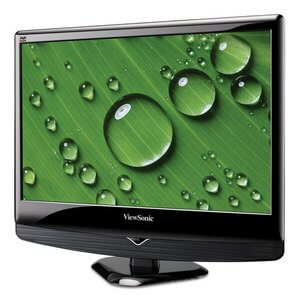
Fig: The image of the LED monitor.
The LED monitor is the improved version of the LCD monitor; the basic technology is similar in both of them. The backlighting is the main difference between the LED and the LCD monitor.
4. Plasma Monitor
The plasma monitor is the flat panel display type monitor. It uses small cells containing plasma. These types of monitors have ionized gas that responds to electric fields. The plasma monitor displays sometimes known as the “thin-panel” displays.
These monitors are used to analog video signals or display modes digital computer input. Its display is flat rather than curved as compared to CRT (cathode ray tube) monitor display. Its display comes in the conventional PC display sizes up to 60 inches for the home theater and high definition television. IBM built the monochrome plasma display in the 1980s. These types of monitors display orange letters against the black screen.
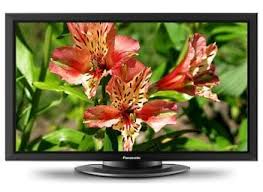
In these monitors, each pixel on the screen is illuminated by the tiny bit of plasma or charged gas. The display of these monitors is thinner than cathode ray tube (CRT) displays and brighter than the liquid crystal displays (LCD).
B. Printer
The printer is the output device, which makes the constant representation of graphics or text on the paper. The expensive printers are used for higher-resolution color printing. The printer is connected to the computer in different ways. Charles Babbage invented the first printer for the use of difference engine in 1822. The printed output generated by the printer is known as a hard copy. This hard copy is the physical version of any electronic document.
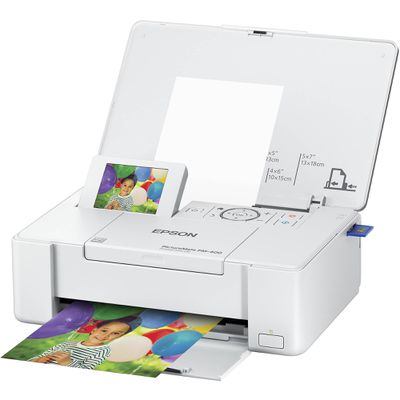
Some printers can print only black and white hard copies, but today mostly printer print the color hard copy. Many home printers produce high-quality photos, and this is possible because modern printers have high DPI (dots per inch). This DPI allows the printer to print the document with an excellent resolution. There are mainly two types of printers:
- Impact printers
- Non-Impact printers
1. Impact printers
The impact printer is referred to the printer class; these types of printers are direct contact of an ink ribbon with the paper. The impact printers are not used widely because of noise.
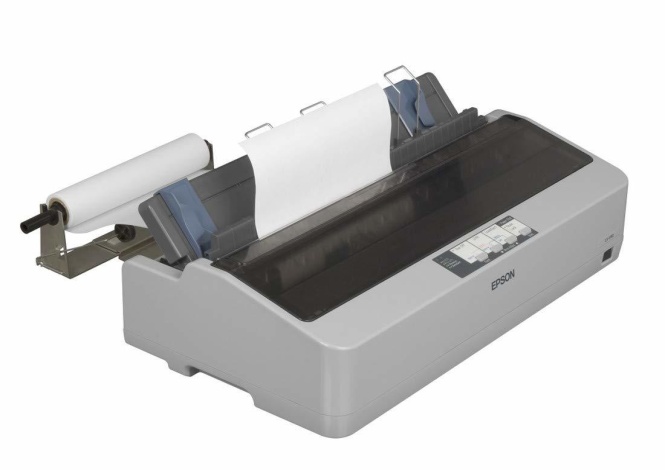
Figure: The impact printer.
These printers make a noise when the striker hits on the ink ribbon while printing. The impact printer is two types which are given below:
- Character printers.
- Line printers.
Character Printers
The character printers are those printers which can print the single character at a time. These support the individual character only. Nowadays, these printers are used in rare cases. There was a speed issue with these printers, and we can print only text. We were not able to print the picture or any graphical representation.
Changing the size of the font is not possible in these printers because the column printed must have its print hammer. The chain and band printers are medium and high-speed printers; they can print over 300 lines per minute. The dot matrix and the daisy wheel printers are the common impact character printers.
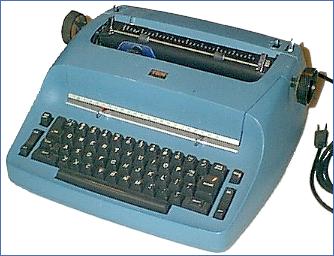
Figure: The character printer.
Line printer
The line printer is capable of printing the entire line of the text before moving to another line. Mostly the old-line printers were impact printers. The line printers are primarily associated with the unit record equipment. The Line printer is also known as the bar printer. They are still used in some business which is low cost and the ability to print the multi parts from. The disadvantages of a line printer are:
- They cannot print the graphics.
- The print of this printer is of low quality.
- The Line printer was very noisy.
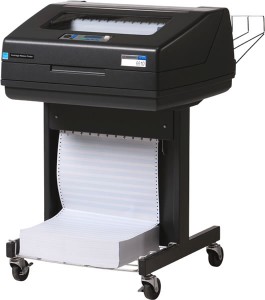
Figure: The Line printers.
The technology of the line printer still used in this modern world. The print speed of the line printer is 600 lines-per-minute. These types of printers were developed in the 1950s. After some time, the speed range of these printers becomes 150 to 2500 lines per minute. There are two types of line printers, which are given below:
- Drum printer
- Chain printer
Drum printer
The drum printer is designed to fix the font character set. According to the desired character, every column passes to the print position. The drum printer has a feature of drum installations or setups. The newer type of printer is a laser printer that can use the drum to hold the paper in place. In these printers, the drum receives an image from the laser and transfers it onto the paper. The drum is coated with the photoreceptor materials in this printer.
Chain printer
The chain printer is an output device that can print characters, symbols, and graphics on paper. These printers are also called as the band printers. The chain printers are one of the fastest printers that can produce up to 400 to 2500 characters per second. These can contain the characters on the rotation band.
2. Non-impact printers
The Non-impact printers are those printers that can print without banging the ribbon onto the paper. The laser printer, LED, Inkjet, Solid Ink, etc. are the example of Non-impact printer. These printers are also two types which are given below:
- Laser printer
- Inkjet printer
Laser printer
The laser printer is the type of printer that uses laser and electrical charge model instead of traditional printing of ink onto paper. In the laser printer, the laser beam fire on the mechanical cylinder is called photo receptor.
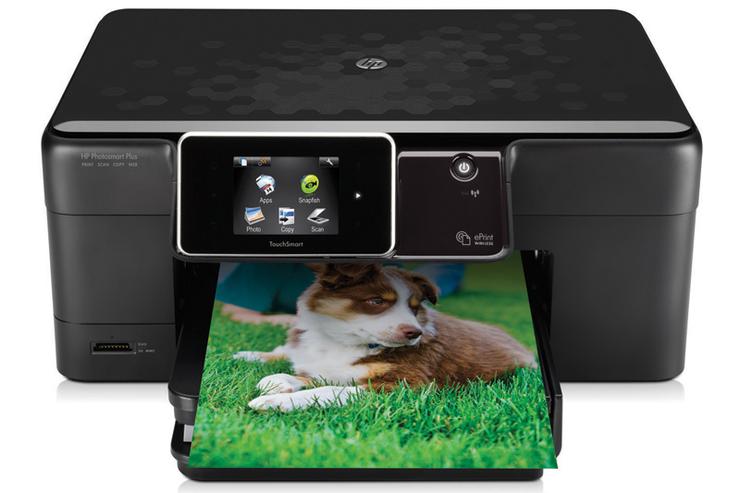
Fig: The Laser Printer
These results exist in the pattern on the photoreceptor that is coated with the toner. The laser printer uses the powered toner element for the printing instead of liquid ink, and it is one of the biggest difference between the normal impact and non-impact printer.
Inkjet printer
The Inkjet printer is the output device that produces the hard copy by spraying the ink onto the paper. It can generate the text with a resolution of at least 300 dots per inches. Many models of Inkjet printer produce other devices such as scanner, photocopier, etc.
C. Projector
The projector or image projector is the output device which can project the image onto the surface or projection screen. Most projectors create the image by shinning the light through the small transparent lens, but the newer type projectors can project the image directly by using the laser. Some common types projectors used today are known as the video projector. These video projectors are the replacement from the earlier types of projectors.
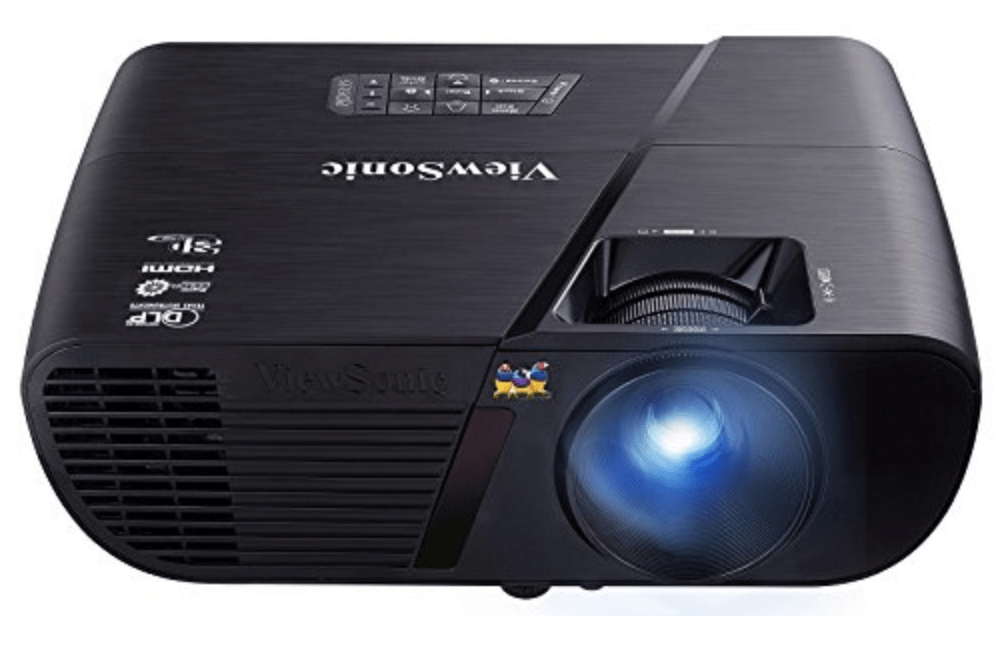
Fig: The projector.
The projectors can produce only slides or moving images (videos). These come in many shapes and sizes — projectors commonly found in the classrooms, conference rooms, auditoriums, and places of worship. The projectors can be categorized into three parts based on the type of input.
D. Audio Speakers
The Audio speakers are the common output device used with the computers systems. The primary purpose of speakers is to produce the audio voice as an output that can be heard by the listener. The speakers can convert the electromagnetic waves into the sound waves.
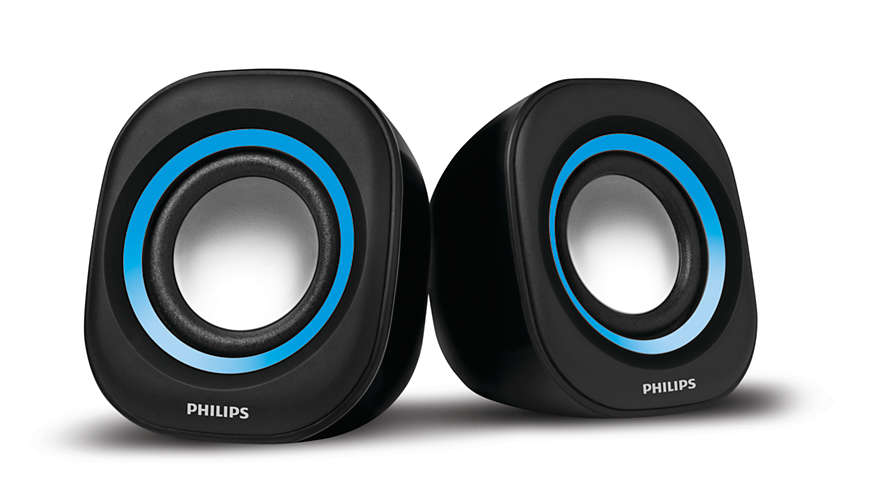
Fig: The Audio Speakers.
The speakers receive audio as an input from the device such as a computer or an audio receiver then this input may be either in analog or digital form. The speakers can produce the sound which is defined with the help of frequency and amplitude.
E. Head Phones
The Headphones or earphones are the hardware output devices. We can listen to the audio or watch the movie without disturbing the people around us with the help of headphones or earphones.
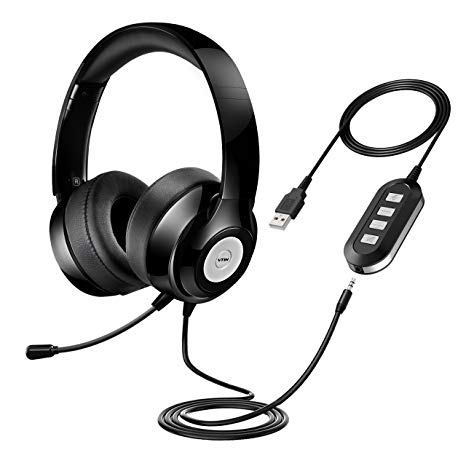
Figure: The Headphones.
The Nathaniel Baldwin developed the first pair of headphones in 1910. The U.S. Navy ordered 100 pairs of the first time. The headphones come in different shapes and styles.
F. GPS (Global positioning system) navigation device
The GPS Navigation device can receive the information from the GPS satellite to calculate the device’s geographical position. The GPS Navigation device was developed for the use of united states military in the 1980s.
The GPS receiver existed in many commercial products such as automobiles, smartphones, smartwatches, etc. The GPS includes 24 satellites which are expanded in space about 12000 miles above the earth surface. Every GPS satellite broadcast a message that message has the satellite's current position, orbit and exact time.
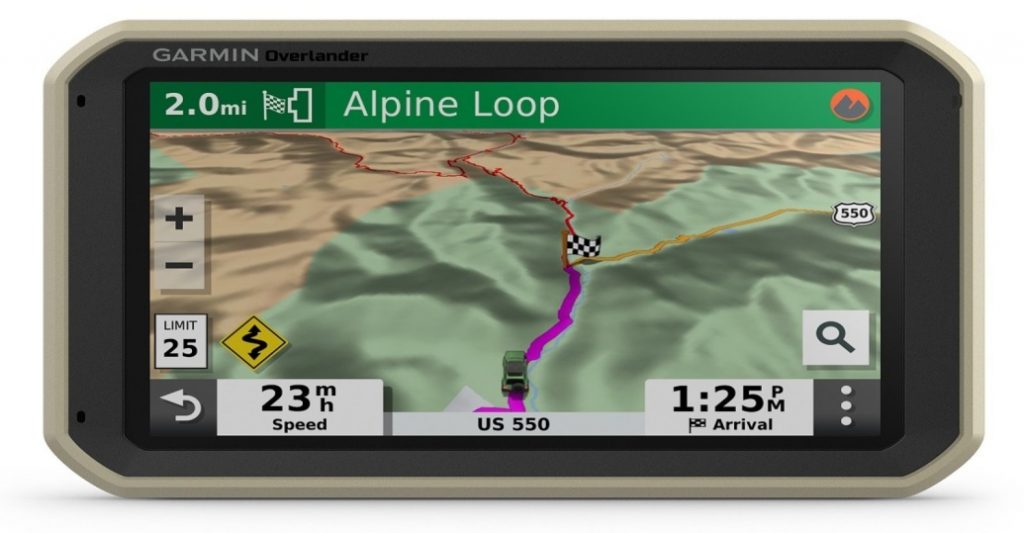
Figure: The GPS Navigation device.
G. Sound Card
The sound card is the expansion card or integrated circuit to produce the sound on the computer. That sound can be heard through speakers or headphones. The computer system does not need a sound care device. Every machine contains the sound card in one form another, either in the expansion slot or build in the motherboard.
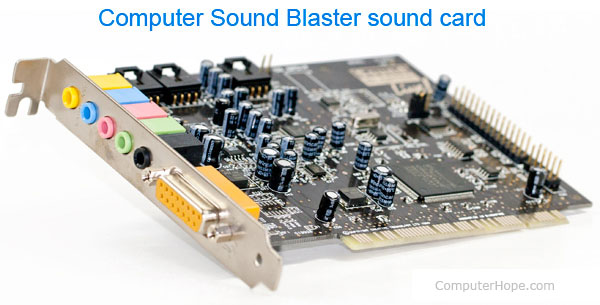
H. Video Card
The video card is connected to the motherboard of the computer system and generates the output images to display. The processing unit on the video card is also referred to the graphic cards. These cards include the processing unit, memory, and connections to the display device.
The video card is similar to the CPU, and its design is optimized to work with the images. The memory of the video card is similar to Random access memory on the motherboard. The video card is connected to the motherboard of the computer system by using the slot.
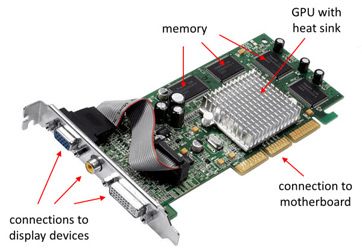
Fig: The Video Card.
The video card is the printed circuit board and includes its processing unit and memory. It is like the type of computer system itself.
I. Braille Reader
The Braille reader is also known as the braille display, which is an electronic output device. It allows the blind person to read the text displayed on the monitor of the computer. The computer transfers the text to the output device; inside the device, the text is converted into the Braille.
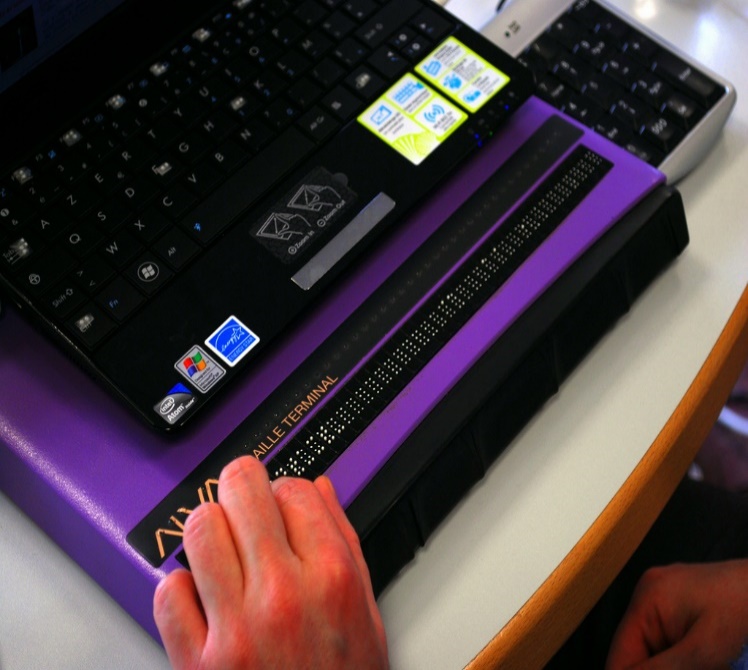
Fig: The Braille Reader.
The text is displayed by raising rounded pins through the flat surface on the machine. There are also the braille reader apps for the smartphones and tablets which can work in conjunction with Bluetooth braille output device.
J. Plotter
The plotter is the computer hardware device like the printer. It is used for printing the vector graphics. Plotters use the pen, pencil, marker, or another writing tool to draw multiple continuous lines onto the paper.
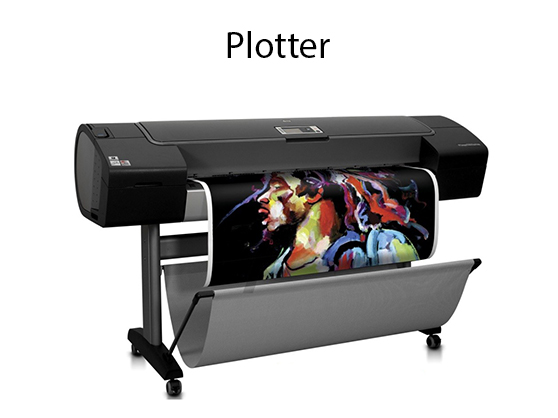
Related Posts:
- Input devices of Computer
- Computer: CPU (Central processing unit)
- Computer Hardware
- Block Diagram of Computer
- Generation of Computer
- High-Level Language in Computer
- Low Level Language in Computer
- Middle-level language in Computer
- Third Generation of Computer
- Fourth Generation of Computer
- Fifth Generation of Computer